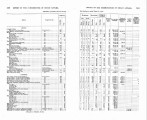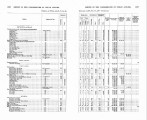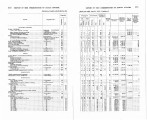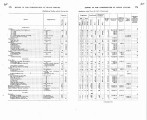| OCR Text |
Show 52 REPORT OF THE COMMISSIONER OF INDIAN BFFAIRS. blacksmith tools and horseshoes, a miniature hay baler, and a model wagon, a cupboard, and other examples of woodworking. Decoration and color are given by Navaho blankets, rush matting, pottery made by the Pueblo Indians in New Mexico and the Catawba Indians in South Carolina, and implements and ornaments used by various tribes. The frieze, from Miss De Cora's art department at Carlisle, was designed and made by Indian pupils, as was also a rug of oriental weave. Other examples'of applied Indian design on picture frames, pillow covers, etc., were furnished by them. The principal setting for the exhibit is a fine collection of photographs of Indians and Indian life which were lent by Mr. E. S. Curtis, of Seattle, Wash. They were selected from a large historical series which he is making of all the Indian tribes in order to furnish a com-plete pictorial history of the North American Indians. A more technical historicaltouch is given by John Smith's map of Virginia, beside which is another map showing the present location in tide-water Virginia of the 700 mixed blood descendants of the Indians of the Powhatan stock. Almost the only other Indians who retain any part of the territory in which the early settlers of the seven-teenth century found them are the Catawbas, the Cherokees in North Carolina, and the Six Nations in New York. They are represented in the exhibit by pottery, baskets, etc., and especially by a model, one-twentieth size, of an I ~ q u o ibsa rk council lodge. In contrast with this lodge is a model of a two-room frame house with porch, such as many Indians now occupy, made by a full blood Absentee Shawnee. The Government schools represented in the exhibit are : Chemawa, Chilocco, Carson, Crow Creek, Cheyenne, Crow, Cantonment, Chey-enne River, Carlisle, Flathead, Fort Peck, Fort Shaw, Genoa, Has-kell, Klamath, Lac du Flambeau, Lemhi, Mission, Morris, Neah Bay, Navaho, Poplar River, Phoenix, Ponca, Quilieute, Riverside, Shaw-nee, Santa Fe, Swinomish, Seneca, Siletz, Tomah, and Wittenberg. Small school exhibits also were obtained from six of the public schools for Indians in New York, the only State which provides sys-tematically for the education of its Indian youth. The Indian de-partment of Hampton Normal Institute is also represented. The Carlisle school has nothing at Jamestown to illustrate its ex-tensive equipment for teaching the trades, as its carefully prepared exhibit was wrongly delivered on the exposition grounds and no trace of it has been found; however, restitution has been made for the cash value of the lost articles. There are connected with the Indian field establishment about 5,500 employees engagid in some capacity in the campaign of civilization |



















































































































































































